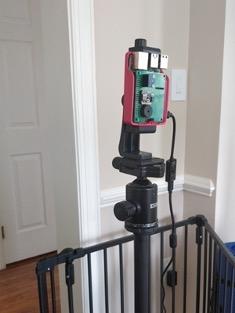Summary
The goal of this project is to help better prepare the nation for the next pandemic, whose occurrence is beyond debate and just a matter of time. Specifically, the goal is to develop electronic contact tracing technology to blunt the spread of highly infectious diseases, such as COVID-19, at the early stages of an epidemic.
Description

We are developing performance metrics for not just ranging, but also for detecting close contacts, which in the context of COVID-19 is the situation where two people are less than six feet apart with no obstacles between them. Obviously, the duration of a close contact is important, as it affects the likelihood of virus transmission from one person to the other. We are also developing testing procedures for proximity detection devices based on the performance metrics identified.
On the long term, standards are needed for interoperability of proximity detection devices and to ensure that the electronic contact tracing and exposure notification system as a whole is privacy-preserving and secure.
Major Accomplishments
- Developed wearable device on a Raspberry Pi Zero W platform for peer-to-peer proximity detection based on Bluetooth Low Energy (BLE) Received Signal Strength Indicator (RSSI) following the Google-Apple Exposure Notification (GAEN) Bluetooth and Cryptography Specifications
- Five-week long BLE RSSI data collection campaign on NIST Campus under various operational scenarios
- Evaluated performance of peer-to-peer proximity detection based on BLE RSSI
- Developed two methods for "close contact detection" a la CDC definition for COVID-19, one based on the Viterbi Algorithm and the other based on Kalman Filtering
- Developed wearable device on a Raspberry Pi 4 platform and using inexpensive components (buzzer and microphone) for peer-to-peer proximity detection based on ultrasonic ranging (20 KHz - 30 KHz) and evaluated system performance
- Depending on the performance metric and separation between devices, achieved 5-10 cm ranging accuracy when a pair of devices were in line-of-sight of each other and from from 0.5 meters - 5.0 meters apart
- Demonstrated that the system does not generate false alarms when a pair of devices are in non-line-of-sight of each other

